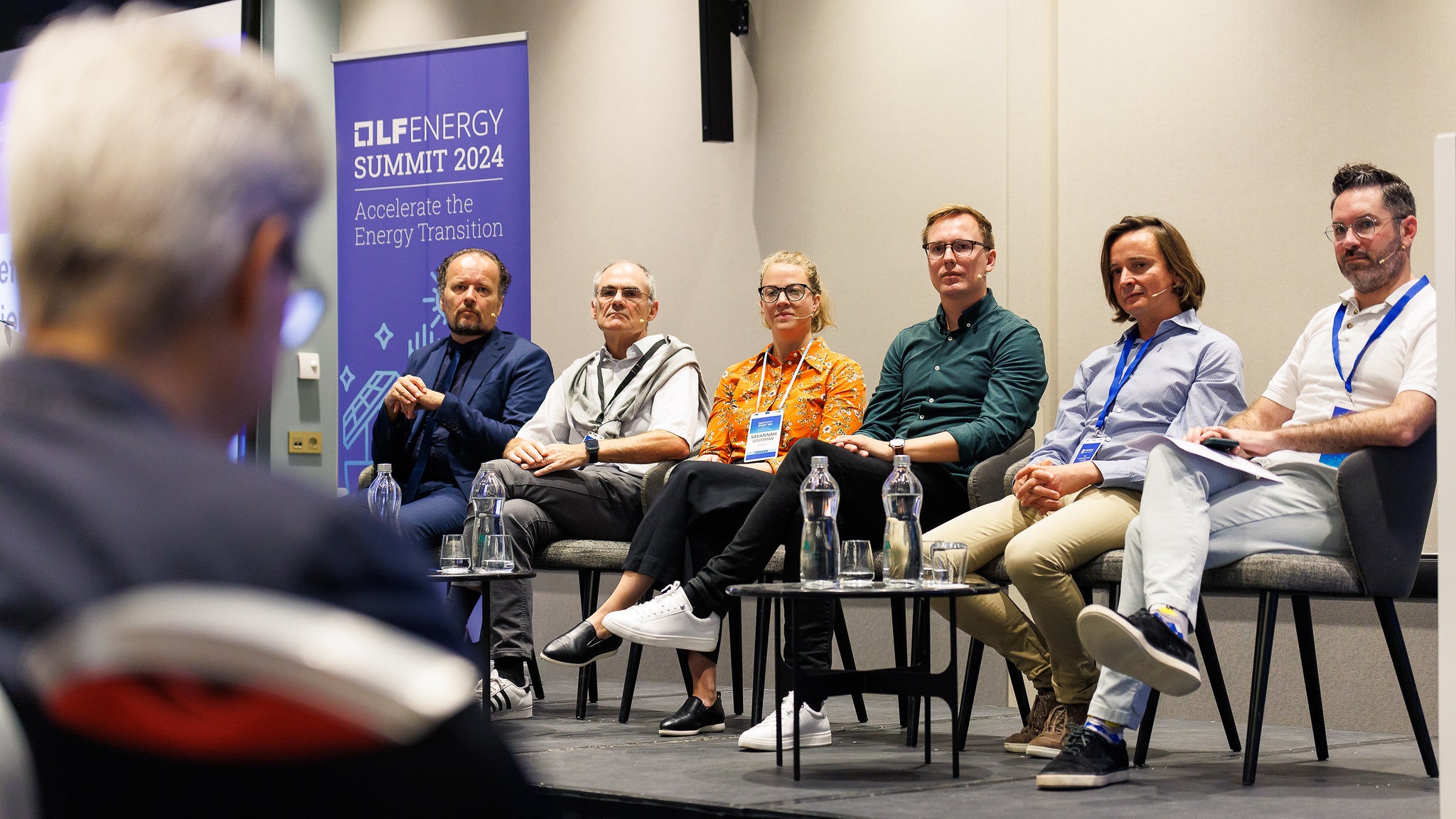LF Energy Summit Recap and Video: The Strategic Benefits of Open Source Collaboration for the Energy Transition & Policy
At LF Energy Summit 2024, a diverse panel of experts came together to discuss how open source collaboration can drive forward the energy transition. Moderated by Dan Brown of LF Energy, the panel included industry and academic leaders: Antonello Monti (RWTH Aachen University), Lucian Balea (RTE), Savannah Goodman (Google), Jonas van den Bogaard (Alliander), and Mark van Stiphout (European Commission, DG Energy). Together, they shared their insights on the transformative role open source plays in overcoming challenges in decarbonization, grid modernization, and policy-making (full video follows below).
Here are the key takeaways from the discussion:
1. Open Source as a Catalyst for the Energy Transition
Antonello Monti emphasized the role of electrification and digitalization in decarbonizing energy systems, noting that these trends are reshaping the energy sector. He highlighted the importance of collaborative innovation through open source frameworks to address the vast complexity and scale of modernizing energy grids. Monti described the shift from centralized, top-down power systems to decentralized, bottom-up solutions, where distributed energy resources (DERs), such as solar panels and electric vehicles, are playing a pivotal role.
Monti framed the transition as a “180-degree transformation,” where the old models no longer suffice, and only through shared, open digital infrastructures can the energy sector meet the rising demand for renewable energy integration and grid flexibility.
2. The Need for Policy and Regulatory Innovation
Mark van Stiphout provided the European Commission’s perspective, discussing how policies need to evolve to facilitate this transition. He noted that while renewable energy adoption has progressed significantly—reaching around 30%—many regulatory frameworks are still structured around legacy systems. The challenge, he argued, is aligning policy with the new decentralized, digital energy system that requires seamless data sharing and cross-border collaboration.
He also stressed the importance of open data exchange to support innovations in grid management, electric vehicle infrastructure, and consumer energy behavior. van Stiphout highlighted ongoing efforts within the EU to enhance flexibility in energy markets and to ensure that renewables can be fully integrated.
3. Digital Infrastructure and Grid Modernization
Lucian Balea from RTE echoed these sentiments, emphasizing the operational challenges that transmission operators face due to the rise of renewable energy and the electrification of transportation and heating systems. He described how the slow pace of grid development, combined with increasing pressure from aging infrastructure and new energy demands, makes grid flexibility crucial.
Balea outlined how RTE is leveraging open source solutions to improve data interoperability across transmission and distribution systems. One notable project he mentioned was the OneNet Connector, which aims to enhance data communication between TSOs (Transmission System Operators) and DSOs (Distribution System Operators) across Europe, ensuring that distributed renewable resources can be efficiently integrated into the grid.
4. Google’s Ambitious 24/7 Carbon-Free Energy Goals
Savannah Goodman from Google shared the tech giant’s vision for 24/7 carbon-free energy—a bold commitment to match every hour of electricity consumption across all global operations with clean energy. She spoke about the data challenges involved in achieving this, highlighting the importance of accurate, real-time data on energy consumption and renewable availability.
Goodman explained how Google is working with partners like LF Energy and others in the open source community to standardize data access and make it more readily available. This open, collaborative approach not only benefits Google but the broader energy ecosystem, making 24/7 carbon-free energy more achievable for all organizations.
5. The Strategic Role of Open Source in Accelerating Innovation
Jonas van den Bogaard from Alliander discussed the strategic benefits of open source collaborations for utility companies. He stressed that co-creation and open partnerships are crucial for scaling innovation and addressing the energy transition’s complexity. Open source models allow utilities, vendors, and research institutions to pool resources, experiment with new ideas, and build on each other’s successes.
van den Bogaard also pointed out that e-mobility presents a huge opportunity to manage energy consumption flexibly, allowing utilities to shift demand when renewable generation is abundant. Alliander sees open source collaboration as key to creating smart, adaptable systems that can scale as new technologies emerge.
Conclusion: Collaboration is Key to a Carbon-Free Future
The panelists agreed that the energy transition is a multi-faceted challenge that requires digital transformation, regulatory alignment, and cross-sector collaboration. Open source stands at the heart of these efforts, enabling faster innovation, improved data sharing, and more efficient use of resources. By embracing open source principles, the energy industry can break down silos and accelerate the shift towards a carbon-neutral, decentralized energy system.
